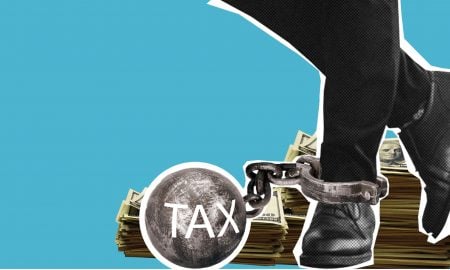
Unemployed And Waiting For Government Assistance? Read To Learn About Application Forms, Eligibility Status, And How Much You Can Be Paid

The CARES Act provides unemployment insurance to those people who have just lost their jobs due to the ongoing coronavirus pandemic. The United States Department of Labor ran the numbers, and it said that a total of 6.6 million American citizens filed complaints about joblessness in the first week of April, which makes the final count of those complaining about unemployment at 10 million by that time.
Since unemployment rates are soon to hit its historic low, it is being projected that about 47 million jobs in the U.S. could be lost due to the pandemic, hitting the unemployment rate as high up as 32 percent. And while the CARES Act is designed to provide funding to unemployed people, it will also offer benefits to folks who were previously ineligible for the CARES program.
Who is now qualified for unemployment?

People who were self-employed before the pandemic such as farmers, gig workers, contractors, and freelancers are now eligible to mark themselves as unemployed. Because of the reduced demand for these jobs in their relevant fields, the government will now be helping them.
Individuals who want to get the benefits of the CARES program will need to provide proof that they are unemployed due to the direct result of the pandemic.
Who isn’t eligible?

People who are working from home and are getting paid for it and people who are on paid time off (PTO) aren’t eligible for the unemployment insurance program. However, if they get sick or are looking after someone who got sick due to the coronavirus, then that’s the only time that they will be eligible for the program. Employees who have also depleted their PTO and is still without a job may qualify for unemployment benefits, as well.
How much stipend will be paid to those who are qualified?
The Disaster Unemployment Assistance of 1974 is the model used for the program when it comes to the benefits that the government will be giving out. Where viable, unemployed employees will get partial salary replacement (approximately 46 percent on average) of their former documented wages. At a minimum, recently qualified workers will get half the average benefit from being unemployed in their state.
How can you apply?
Each state offers its own unemployment insurance program, so workers must review the website of their local Department of Labor for trusted information.
Workers would generally be required to present their income history to gauge their unemployment benefit. However, self-employed workers, independent contractors, and freelancers may not be able to obtain and collect their past wages instantly.
Recently qualified workers should prepare as much up-to-date salary information as possible when it’s their first time to register for unemployment. A good start are tax documents but gathering bills, banking statements, notifications of deposit as well as other proofs of income from at least the previous year are also recommended.
More in Investments & Savings
-
`
Famous Entrepreneurs Want You to Learn From Their Biggest Failures
No one can be an overnight success, as failure is an inevitable baggage on an entrepreneurial journey. Some famous entrepreneurs speak...
December 6, 2023 -
`
Miss your Pet When Traveling? Book These Hotels if You Want a Furry or Feathered Friend Welcoming You at the Lobby
Do you miss your pet, having left him/her behind when traveling? At some hotels, you get your “I-really-miss-my-pet” fix, all thanks...
December 6, 2023 -
`
Downsizing after Retirement is a Pain, but Here’s How You Can Go About It
Retirement needs extensive planning, and it is not just finances. Without proper plans for this next phase of life, chances are...
December 6, 2023 -
`
These are Some of the Greatest Inheritances Recorded the World-over
The Bloomberg Billionaires Index has listed the 25 richest families around the globe, and control over 1 trillion dollars of the...
December 5, 2023 -
`
Stunning Hotels Around the World Which Even Celebrities Fawn Over
Where do Celebs vacation? In certain aspects, superstars are similar to us, but not when it comes to vacation lodging. Stars...
December 1, 2023 -
`
Unlocking Financial Success: Timeless Wisdom from John Paul DeJoria
In a recent interview with Forbes, John Paul DeJoria, the visionary entrepreneur behind Paul Mitchell and Patrón Tequila, shared a wealth...
November 8, 2023 -
`
The Ultra Wealthy Want Their Privacy and They’ll Do Anything to Get It
Ultra-rich rapper Nicki Minaj in her pink Lamborghini worth $400,000 or celebrity entrepreneur Mark Cuban stepping out from his private jet worth $40...
October 31, 2023 -
`
How Celebrities Managed to Solve Their Financial Woes
Celebrities have lost billions and filed for bankruptcy while drowning in debt. If they can resolve their financial issues, then so...
September 8, 2023 -
`
Useful Real Estate Strategies at Various Stages of an Investing Career
There is no one perfect investing approach, as real estate investors are aware. At various phases of your investing career, investigate...
September 2, 2023















You must be logged in to post a comment Login